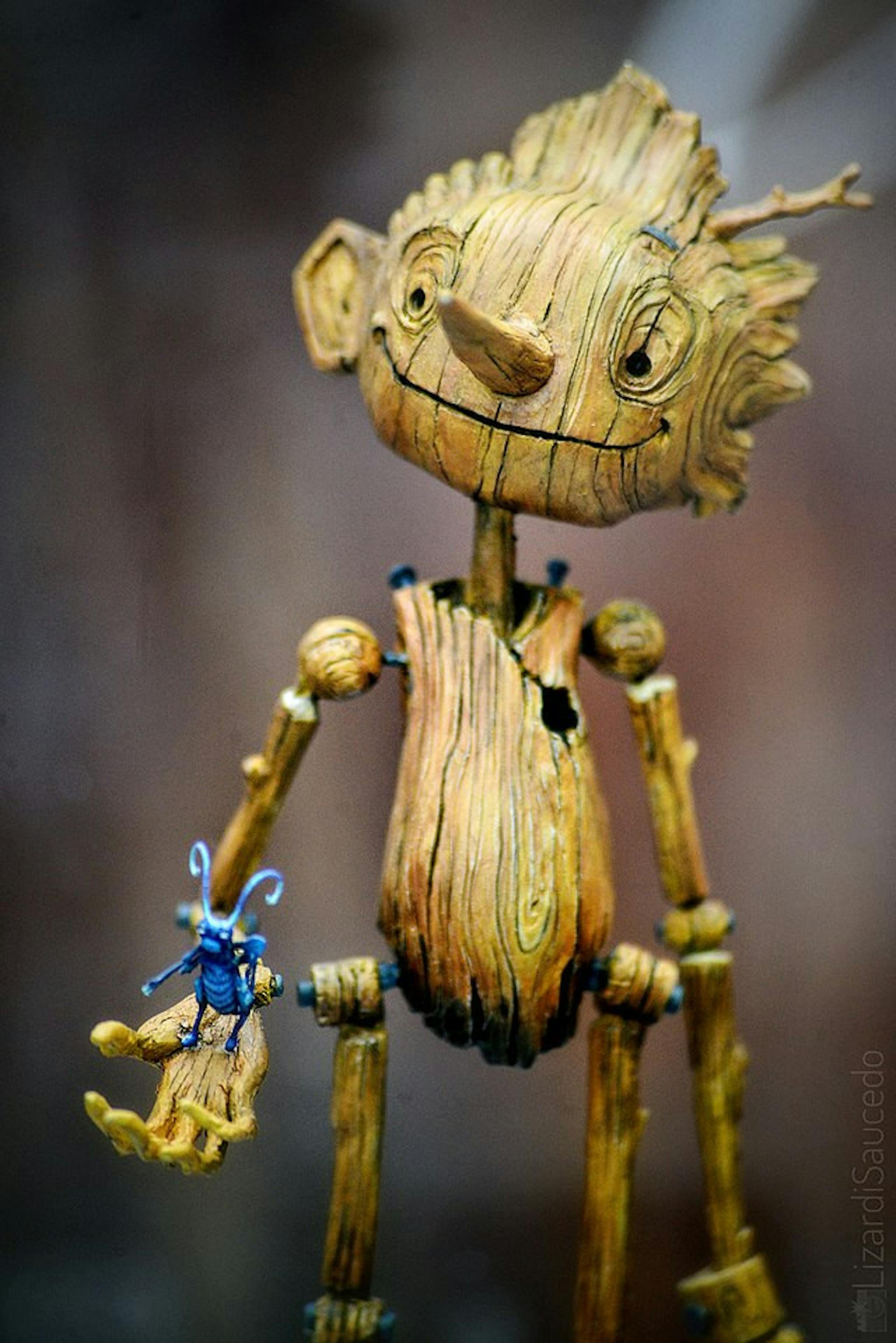Although Pinocchio was created by Italian writer Carlo Collodi in 1883, it was likely his titular 1940 Disney movie that brought the character his greatest American name recognition. Since then, his story has been retold many times, with varying degrees of success. Just last year, Pinocchio was brought to life onscreen in three separate films, including a live action Disney remake whose human performances were just as wooden as the titular wooden boy. One would think that “Pinocchio” has been done to death by now — but Guillermo del Toro’s new stop-motion adaptation makes an argument for the story’s continued relevance, reimagining the familiar story in an unexpected way.
Del Toro, known for his contributions to the fantasy and horror genres, may not seem like the obvious choice to direct a “Pinocchio” remake. A passion project of del Toro’s, the film hews closer to Collodi’s novel than the Disney classic, featuring many of the dark and fantastical elements his movies are known for. The twist? Del Toro’s “Pinocchio” is set in fascist Italy amid the backdrop of war. Despite its deviation from the fairy tale world of the original story, this dark reinvention works surprisingly well.
The film begins not with Pinocchio, but Carlo, the beloved human son of Geppetto (David Bradley), a friendly woodcarver who lives in Italy during World War I. Carlo is killed during an aerial raid, and a devastated Geppetto plants a pine cone near his grave to honor him. Many years later, that pine cone has grown into a tree, which Geppetto chops down and carves into a wooden puppet. Brought to life by a magical sprite, the puppet becomes a walking, talking boy who’s eager to learn about the world around him.
Fans of the Disney movie will notice only a few traces of the 1940 classic in del Toro’s film. Jiminy Cricket is now Sebastian J. Cricket (a perfectly cast Ewan McGregor), who serves as Pinocchio’s conscience and the story’s narrator. Pinocchio’s nose is still a part of the story, but it’s overshadowed by the many tribulations he faces throughout the film. After a fatal accident, Pinocchio is sent to the afterlife, where he discovers he is immortal — but each time he “dies,” he’ll have to spend a little more time with Death herself (Tilda Swinton). As Pinocchio finds his way in the world, he meets Count Volpe (Christoph Waltz), a sleazy showman who lures Pinocchio into performing fascist propaganda with his traveling circus, and austere government officials who seek to take advantage of his immortality by conscripting him into the army.
The film is beautifully animated, with a hand-drawn, textured look that is much more appealing than the hyper-realistic designs many modern animation studios are churning out. Pinocchio looks like he’s really been carved out of wood, with spindly limbs and rough edges. Del Toro’s experience directing live action clearly lends itself to the film’s animated world — he’s able to capture incredible emotion in his characters. And the scope of the film is so much more impressive when you remember that every set and every character was crafted by hand, from the giant sea monster that swallows Pinocchio to the skeletal rabbits that he meets in the afterlife.
Pinocchio’s voice is provided by the talented relative-newcomer Gregory Mann, who imbues the character with a sense of curiosity and childlike wonder, and Bradley makes for an endearing Geppetto. Composer Alexandre Desplat’s score weaves together subtle musical motifs that highlight the beautifully crafted characters, and several original songs, written by Desplat and del Toro, help to break up the film’s dark narrative with delightful, folksy melodies.
Del Toro’s screenplay excels where it deviates from past iterations of the story: the introduction of “Death” as a character and the issue of Pinocchio’s immortality make for a much more emotionally driven narrative. The decision to set a children’s story in Mussolini-era Italy may seem strange — and it is, at first, but del Toro really uses it to his advantage, flipping the original story’s moral on its head. The classic fable reminds audiences that telling lies is bad, laws must be followed, and authority is always right. In this film, Pinocchio discovers that authority figures can be wrong, or even dangerous — neither the circus master nor the fascist officials have Pinocchio’s best interests in mind when they offer to help him. Instead of yearning to become a real boy, Pinocchio sets out to find his own place in the world. In the end, “Pinocchio” is a story of acceptance, sacrifice and a father’s enduring love for his son that surpasses its predecessors by telling an entirely different story altogether.
Summary:
“Guillermo del Toro’s Pinocchio” (2023) is nothing like the story you know — and maybe that’s a good thing. Del Toro updates the classic tale in an unexpected way, using bold narrative decisions and spectacular stop-motion animation to tell a powerful story.
4 stars






